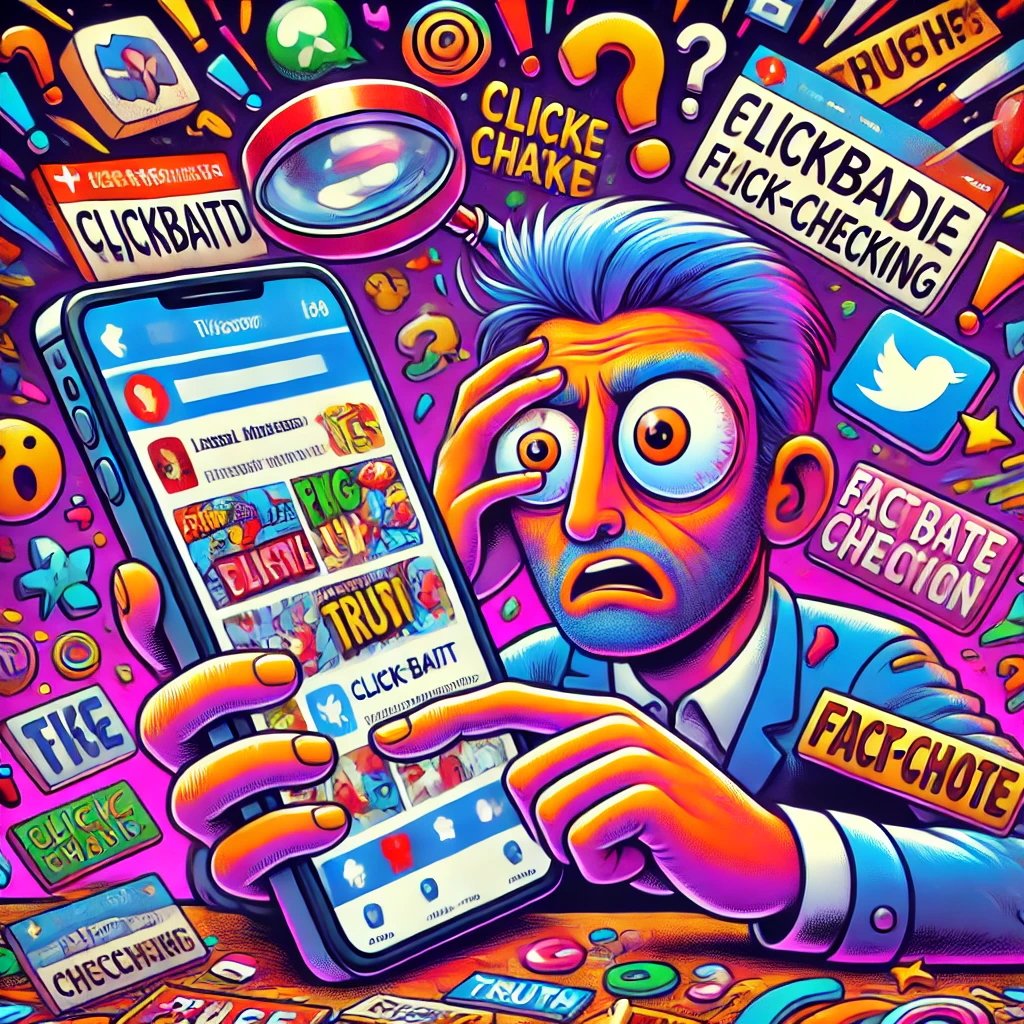Congratulations, You’re Probably Wrong: A No-Bullshit Guide to Fact-Checking Before You Make an Ass of Yourself
Let’s get something straight—just because you read it, heard it, or saw it somewhere doesn’t mean it’s true. We live in an age where information is everywhere, and misinformation is just as abundant. If you're the kind of human who values truth over comfort, it’s time to get serious about fact-checking. Here’s everything you need to know about verifying what you come across and why it’s so damn important.
Why Fact-Checking Matters
Fact-checking isn’t just for journalists or academics. It’s a critical skill every human should develop—especially in a world where your social media feed is full of clickbait headlines and half-truths. When you don’t fact-check, you’re not just potentially spreading false information—you’re also allowing yourself to be misled, manipulated, and, let’s face it, sometimes made to look like an idiot.
But beyond avoiding embarrassment, fact-checking helps you make informed decisions. Whether it’s deciding who to vote for, what diet to follow, or whether to believe that outrageous thing your uncle shared on Facebook, the ability to discern fact from fiction is crucial. And the best part? It’s not rocket science.
Cognitive Biases: Your Brain’s Worst Enemy
Before we dive into the nuts and bolts of fact-checking, it’s essential to understand that your brain is working against you—seriously. Your mind is full of cognitive biases that make it incredibly easy to believe things that aren’t true. Let’s break down some of the most common ones:
Confirmation Bias: This is the granddaddy of all biases. You tend to favor information that confirms your pre-existing beliefs and dismiss information that contradicts them. It’s why your friend who believes in conspiracy theories can find “evidence” everywhere.
Availability Heuristic: This bias makes you overestimate the importance of information that’s readily available to you. For example, if you see a lot of news stories about plane crashes, you might start thinking air travel is more dangerous than it actually is.
Anchoring: The first piece of information you receive on a topic tends to stick with you, even if it’s incorrect. It’s why first impressions are so powerful—and why they can lead you astray.
Bandwagon Effect: If a lot of humans believe something, it must be true, right? Wrong. This bias makes you more likely to believe something just because many others do.
How to Fact-Check Like a Pro
Now that you know how your brain might be screwing you over, let’s talk about how to fight back with some good old-fashioned fact-checking.
Cross-Reference Multiple Sources: Don’t just take one source’s word for it. Check multiple reputable sources to see if they’re saying the same thing. If they are, chances are, the information is reliable.
Check the Source: Always consider where the information is coming from. Is it a credible outlet, or is it some random blog? Does the author have expertise on the subject, or are they just some dude with a keyboard?
Look for Evidence: Good information is supported by solid evidence. If an article makes a claim, it should also provide sources or data to back it up. If it doesn’t, that’s a red flag.
Watch Out for Bias: Even reputable sources can have biases. Be aware of the potential slant of the source, and try to balance it by reading information from multiple perspectives.
Use Fact-Checking Websites: Websites like Snopes, FactCheck.org, and PolitiFact are your friends. They’re specifically designed to help you verify claims and debunk misinformation.
Ask Questions: Don’t be afraid to question the information you receive. Who benefits if this information is believed? Is there something they might not be telling you? A little skepticism goes a long way.
Implementing Fact-Checking in Your Life
So, how do you put all this into practice? Start by making fact-checking a habit. When you come across a piece of information, especially if it triggers a strong emotional response, take a step back and verify it before you share or act on it.
Incorporate fact-checking into your daily routine. Make it as automatic as brushing your teeth—except instead of preventing cavities, you’re preventing ignorance.
Remember, the truth is out there—but it’s not always easy to find. It takes effort, discipline, and a willingness to question your own beliefs. But if you want to be a human who values truth over comfort, who isn’t easily swayed by the winds of misinformation, then learning to fact-check is non-negotiable.
In a world overflowing with information, the ability to distinguish fact from fiction isn’t just a nice-to-have—it’s essential. So, take the time to learn how to fact-check, understand the biases that might cloud your judgment, and commit to seeking the truth, even when it’s uncomfortable. Your future self will thank you.
